Our storage habits and the cleanliness of our homes could be creating a fire risk. You may know the dangers of unattended appliances and candles. Other conditions — like cluttered countertops, paper stacks, and what’s sitting beside that candle — could also compromise your home’s fire safety.
Taking fire prevention steps can counteract everyday hidden dangers inside your home and minimize the potential for many household fires, says Steve Kerber, vice president and executive director at the Fire Safety Research Institute. Here are 21 fire prevention safety tips to reduce your risk.
21 Fire Safety Tips
Fire Safety Tip #1: Cut Out Paper Clutter
Paper shouldn’t be stored close to heating sources or burning candles, says Melissa Gugni, owner of Melilssa Gugni Organizing in San Francisco, whose work involves seeing nooks and crannies in homes. Further, stacked newspapers, magazines, and cardboard, as well as paper, can dry out over time, making them more flammable, says Stefan Bucur, founder and owner of Rhythm of the Home, a home improvement company in Lewisville, Texas.
Reduce your risk of fire:
- Remove large quantities of paper clutter in your home.
- Tuck loose papers into desk drawers or filing cabinets.
- Keep large paper stacks away from electrical sources.
Fire Safety Tip #2: Store Batteries Correctly
Batteries can generate heat when their ports come into contact with one another and are potentially large enough to ignite a fire. Nine-volt batteries — used to power smoke alarms — ironically carry the largest risks, Kerber says. The National Fire Protection Association advises never storing nine-volt batteries in a drawer near paperclips, coins, pens, keys, or other batteries.
Reduce your risk of fire:
- Store batteries in their original packaging. If loose, keep their posts covered with duct or electrical tape to prevent them from coming into contact with a metal object or other batteries.
- Never throw batteries in the trash or store them in metal containers.
Fire Safety Tip #3: Put Paint in Its Place
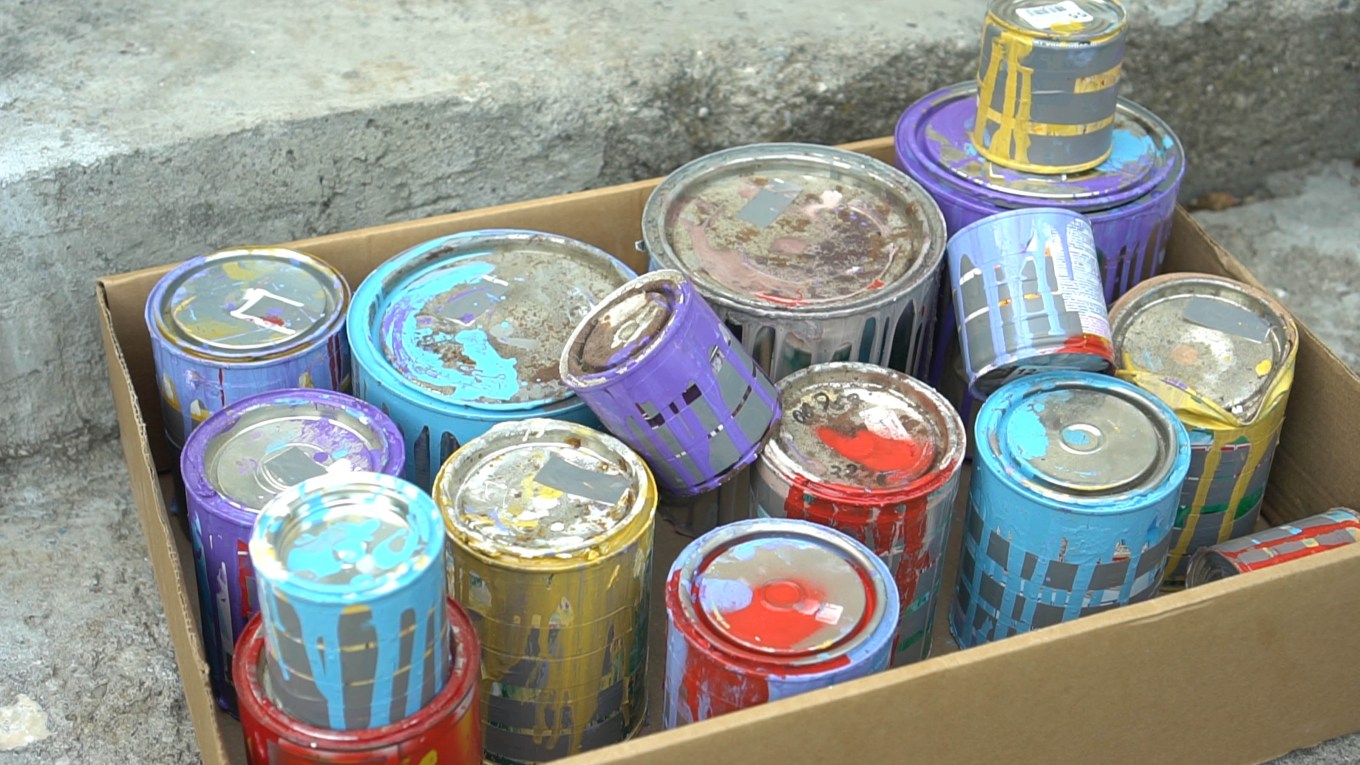
Oil-based paints are highly flammable, making them risky to store inside a home, near heating equipment, or in a garage.
Reduce your risk of fire:
- Keep paint in dry, consistently cool places, like a cabinet, closet, or basement.
- Gugni suggests replacing oil-based paint with latex, water-based paints, which aren’t flammable.
- Dispose of unneeded paint at a hazardous waste site.
Fire Safety Tip #4: Clear Space Around Heating Sources
Make sure fabric furniture, curtains, linens, and clothing are kept away from a radiant heater, gas water heater, or fireplace, warns Steve Lockwood, owner of Mountain State Fire Protection LLC, a fire safety inspection company in Gilbert, Ariz. “Quite often people will pile their clothes on the floor next to a radiant heater, but they’re risking causing a fire,” he says.
Reduce your risk of fire:
- Create a safe distance by keeping anything flammable at least three feet from heating equipment.
Fire Safety Tip #5: Practice Safe Storage in the Garage
Garage fires tend to spread farther and cause more injuries than fires in other areas of the home, according to the U.S. Fire Administration. Gasoline canister storage in the garage is a common hazard, says Tim Jankowski, president of Aladdin’s Cleaning & Restoration in Lapeer, Mich., and a fire damage restoration and prevention specialist. “It is always important that no fuel is left in any gas can for prolonged periods of time,” he says.
Reduce your risk of fire:
- Store oil, gasoline, paints, propane, and varnishes in a shed away from the home, the U.S. Fire Administration advises.
- Drain excess gas seasonally from a lawnmower, snowblower, or other seasonal tools.
- Empty your snowblower in the spring and your lawnmower and weed wacker in the fall, Jankowski says.
Fire Safety Tip #6: Use Grills Safely
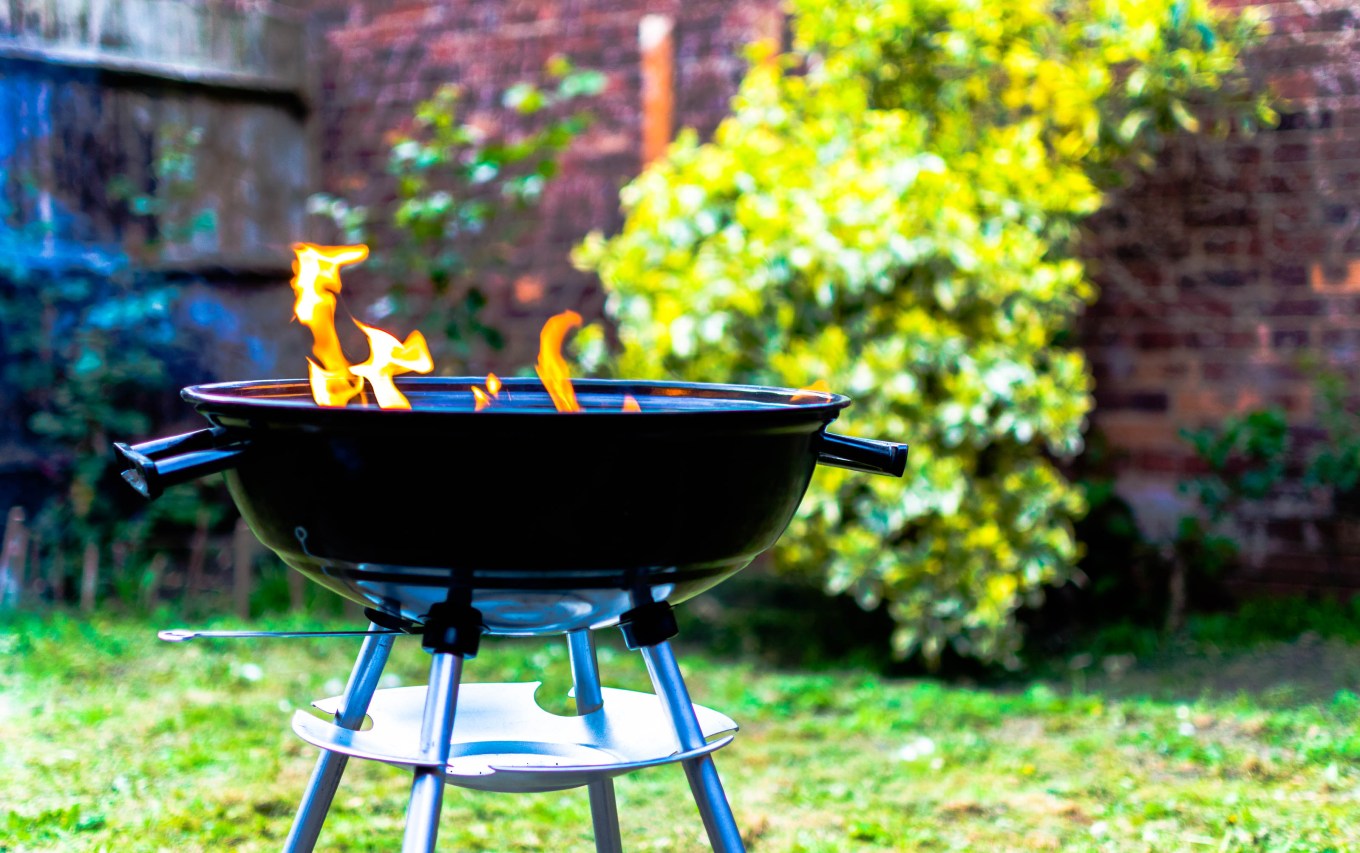
Never use a charcoal or a gas grill inside a garage or near a home. Keep the grill and its trays below clean by removing grease or fat buildup.
Reduce your risk of fire:
- Use a charcoal or propane grill outdoors, away from your home and away from deck railings, under your home’s eaves, or any overhanging tree branches, according to the NFPA.
- Store cooled charcoal bags in a metal pail in the garage with a tightly closed lid.
Fire Safety Tip #7: Clear Reflective Objects from Windowsills
Magnifying objects in the direct sunlight can spark flames. That can also happen with reflective household objects left on a windowsill. In the United Kingdom, in 2020, two separate house fires were caused this way within six days of each other. In one incident, a mirror had been left on the windowsill in the sunlight and sparked flames onto a nearby curtain.
Reduce your risk of fire:
- Don’t leave glasses, vases, mirrors, or other reflective items in the direct sunlight and near windows inside a home, even in cold weather.
Fire Safety Tip #8: Handle Flammable Laundry Carefully
Even your dirty shirt or rag could threaten your fire safety if it comes into contact with a flammable substance soaked in gasoline, paint thinner, grease or oil, some cooking oils, or essential or massage oils. These substances could burst into flames when placed in a washer or dryer.
Reduce your risk of fire:
- Clothes or rags that have come into contact with flammable substances should be laid outside to dry. Once fully dried, they can be washed and placed in a dryer as usual, the NFPA says.
Fire Safety Tip #9: Check for Faulty Electrical Wiring
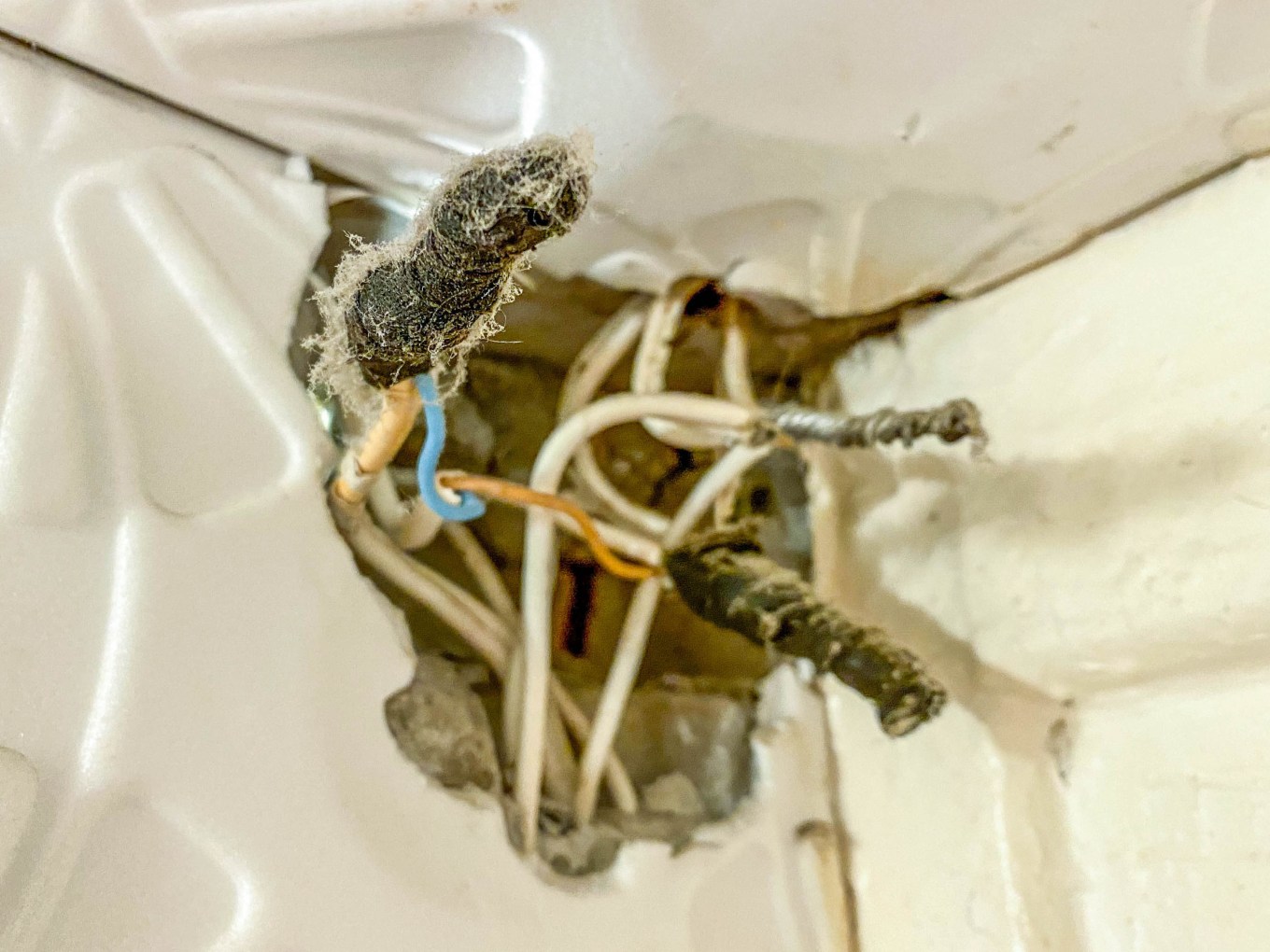
Old and incorrect wiring can pose a serious fire risk. “It’s dangerous because you can’t see it,” says Joe Tolzmann, CEO of RocketPlan, a property restoration management company in Palo Alto, Calif. One red flag could be a loose outlet. If it wiggles at all when you plug or unplug something, call a professional to take a look, Tolzmann says. Also, Kerber suggests watching for additional signs, like discolored or warm wall outlets and switches, a burning smell from an appliance, flickering lights, cracked or broken wall outlets, or recurring blown fuses or tripped circuit breakers.
Reduce your risk of fire:
- Don’t overload electrical outlets, pay attention to possible signs of trouble, and always keep flammable materials (like cardboard boxes, linens and clothes) away from outlets.
- Contact an electrician for a thorough inspection if you suspect problems.
Fire Safety Tip #10: Use Light Bulbs With the Right Wattage
When a light bulb’s wattage exceeds the lighting fixture’s requirements, such as using a 60-watt bulb in a 40-watt lamp, the result is what's called "overlamping." You could be melting the fixture’s wiring insulation. Some other signs of overlamping could be a compact fluorescent light that keeps burning out quickly or that is brown at the bulb’s base (a sign that it’s overheating).
Reduce your risk of fire:
- Use proper wattage for lighting fixtures (a sticker should indicate the wattage). If the fixture is unmarked, do not exceed 60 watts to be safe, fire experts say.
Fire Safety Tip #11: Keep Electrical Plugs Safe
Covered up electrical cords or too may cords plugged into one outlet can pose fire hazards. “Avoid putting cords under rugs and carpets, across doorways or where they can be damaged or pinched by furniture,” Kerber says.
Reduce your risk of fire:
- Don’t use an extension cord for more than one appliance.
- Never use three-pronged plugs with outlets that have only two slots for the plug, according to the Electrical Safety Foundation International.
- Use extension cords in the setting they’re rated for — indoors or outdoors.
- Have additional outlets installed at your home if you’re relying too heavily on extension cords.
Fire Safety Tip #12: Clean Dryer Lint Trap
You probably know to clean out the lint trap in a dryer (after every use, by the way!). But lint also can accumulate in the duct well, Tolzmann says. The NFPA estimates that about a third of dryer fires are caused by vents clogged from a buildup of dust or lint. Lint can build up near the motor, gas burners, or heating elements.
Reduce your risk or fire:
- Use a dryer vent cleaning brush to get a deeper scoop of lint and vacuum around or behind the machine.
- Pay attention to whether your clothes are taking longer to dry or are hotter than usual. If so, clean lint out of the vent pipe or have a dryer lint removal service do it for you, the NFPA recommends.
Fire Safety Tip #13: Keep Your Bathroom Exhaust Fan Clean
Who would think to dust their bathroom exhaust fan? But you should think about it and work it into your maintenance routine. Most exhaust vents have small slits that can become choked up with dust or block up when material builds up over time. That poses a risk for an exhaust fan fire, according to American Family Insurance. The insurer recommends wiping away the dust from the bathroom exhaust vent with a wet cloth and rinsing the cloth in warm, soapy water.
That dust buildup can also cause an exhaust fan to overheat, creating a fire hazard.
Reduce you risk of fire:
- Buy a flexible duct cleaning extension kit at a hardware or big box store. To reach the ducts behind the fan, you may need to uninstall the fan. Or hire a licensed electrician who knows the territory.
Fire Safety Tip #14: Keep Your Kitchen Clutter Free
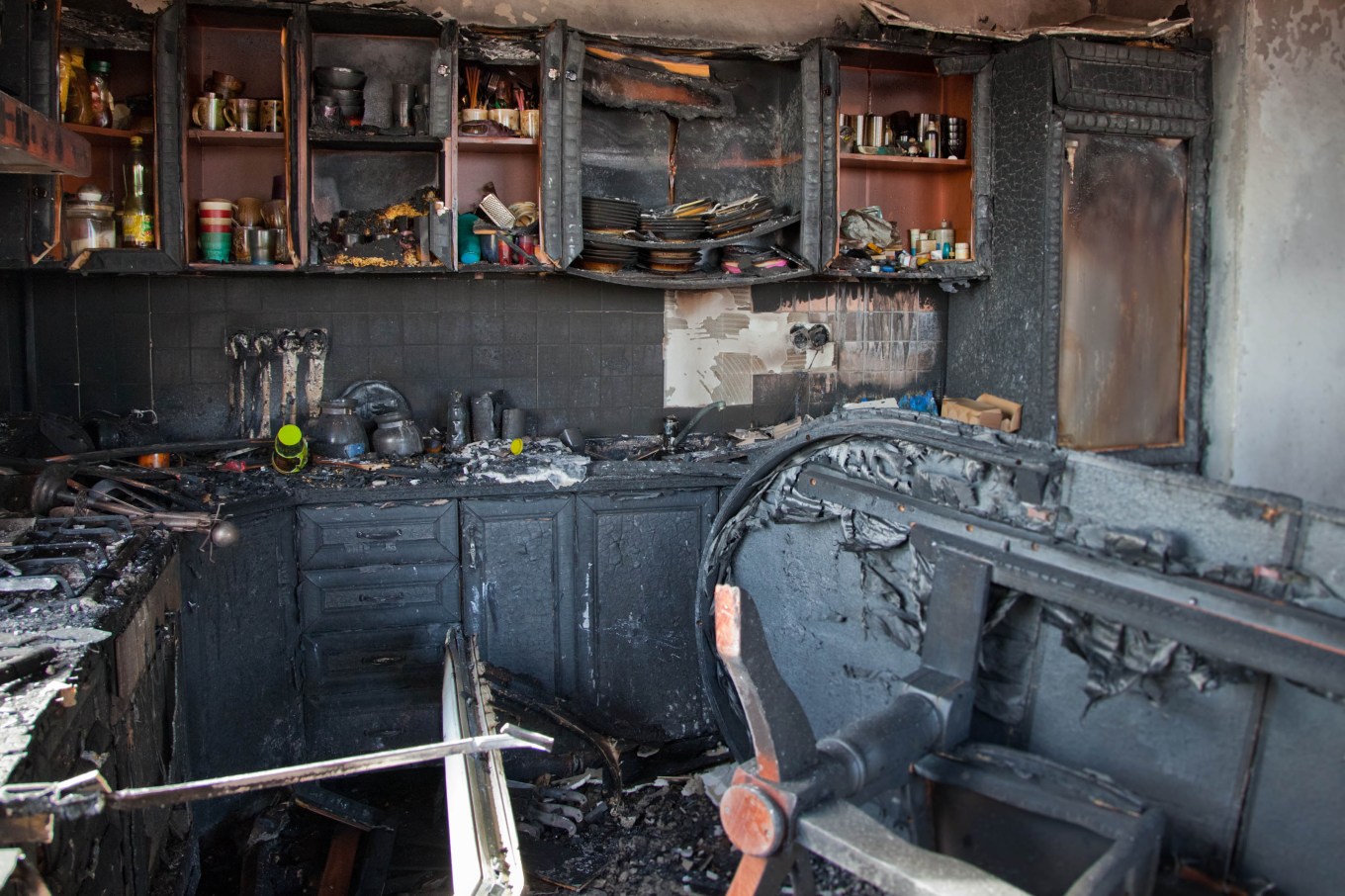
You especially need fire prevention in kitchens. “Even a cluttered kitchen counter can lead to cooking fires if there are materials like hand towels or plastic containers sitting too close to the stove,” Tolzmann warns. About half of house fires are caused by cooking accidents alone, according to the NFPA. “A dirty and greasy stove can easily cause a grease fire,” Lockwood adds. “Placing paper towels or your trash too near a toaster oven also can cause a fire. A clean and tidy kitchen will decrease your chances of a house fire.”
Reduce your risk of fire:
- Keep the kitchen as clutter-free as possible around heat sources like your stovetop and oven.
- Clean grime regularly from the microwave, oven, and appliances (including the toaster); crumbs and grease can start fires.
- Monitor kitchen appliances when they are in use.
Fire Safety Tip #15: Maintain Your Fireplace
Fireplaces can lead to fires elsewhere in the home if the chimney is cracked or blocked, or has creosote buildup. Plus, make sure the fireplace is properly protected. A fireplace without a sturdy spark or glass screen can allow embers to jump onto a nearby rug, carpet, or sofa.
Reduce your risk of fire:
- Use a spark screen over the fireplace.
- Hire a professional to sweep your chimney once a year, the NFPA recommends.
Fire Safety Tip #16: Minimize Accumulations of Materials
Fire departments are reporting serious fires, injuries, and deaths stemming from accumulations of excessive amounts of materials inside homes, resulting in overly cluttered spaces. The NFPA offers consumer handouts warning about the dangers.
Reduce your risk of fire:
- Create an escape plan in case of a fire, and maintain clear pathways and exits for all occupants and for firefighters who may have to respond.
Fire Safety Tip #17: Use Space Heaters Carefully
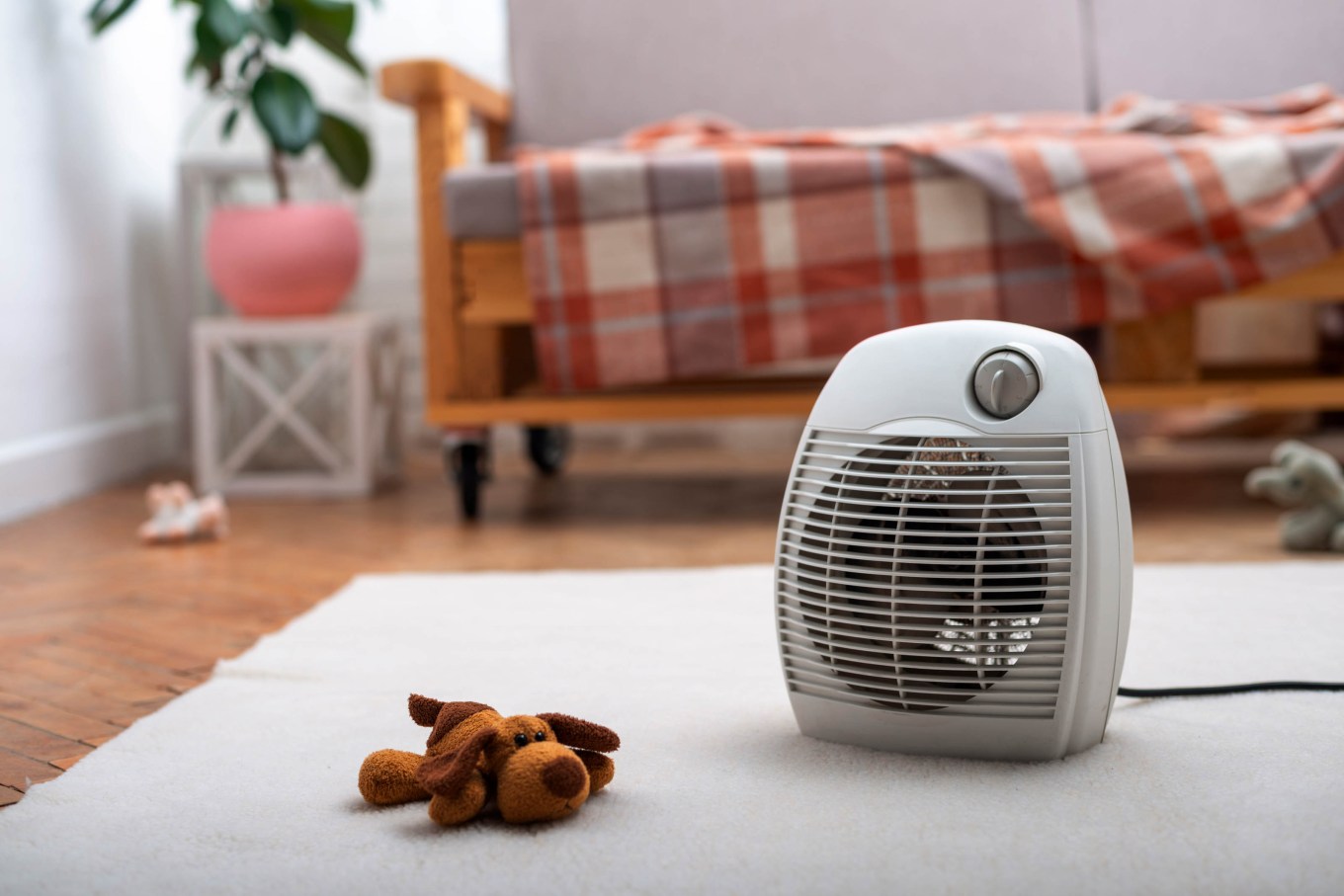
It’s no secret that space heaters pose fire risks. They are blamed for about 1,700 house fires a year. From 2017 to 2019, they led to about 70 deaths and 160 injuries annually, according to the Consumer Product Safety Commission.
Reduce your risk of fire:
- Place a space heater only on a solid, flat surface on the floor, never on a table.
- Plug space heaters directly into a wall outlet; never use an extension cord or power strip (to prevent overloading and overheating), according to the U.S. Fire Administration.
- Keep space heaters at least three feet from anything flammable, such as curtains, bedding, blankets, and furniture.
- Turn space heaters off when unattended or before going to sleep.
Fire Safety Tip #18: Keep Items Away from Candles and Open Flames
Each day, about 20 home candle fires are reported, according to the NFPA. The cause is usually not a tipped over candle. Three out of every five home candle fires occurred when some form of combustible material was left too close to the candle. The flames from the candles can ignite nearby household objects, such as books, curtains, and tissue boxes.
Reduce your risk of fire:
- Keep candles at least 12 inches away from anything that can burn, Kerber says.
- Monitor candles while they're burning. “Keep candles on a stable, heat-resistant surface where pets and children are not able to reach them to knock them over,” Kerber says.
- Consider using flameless or battery-operated candles.
Fire Safety Tip #19: Use Hair Appliances Safely
Curling irons can reach temperatures of up to 475 degrees Fahrenheit (hotter than a deep fat fryer!). They can take up to 40 minutes to cool down, so be cautious even after turning them off. Curling irons and hair dryers cause hundreds of thousands of fires annually, according to the U.S. Consumer Protection Safety Commission.
Reduce your risk of fire:
- Buy a timer to attach to your curling iron or clothes iron if the device doesn’t have an automatic timer, Gugni recommends. It can be set to turn off automatically.
- Purchase a heat-resistant mat for added protection, Gugni suggests.
- Avoid placing flammable items, such as fingernail polish removers and hairsprays, near irons or hair appliances.
Fire Safety Tip #20: Be Careful With Live Christmas Trees and Lights
Although artificial Christmas trees have a big fan base, some homeowners prefer the real thing. If you opt for live trees, keep in mind that as Christmas trees dry out, they become more flammable. Thirty-six percent of Christmas tree fires start in January, according to the NFPA. Be extra vigilant about watering a live tree every day and make sure it's at least three feet away from heat sources like fireplaces, radiators, space heaters, candles, and heat vents.
Reduce you risk of fire:
- Inspect your holiday lights before you put put them up, says the U.S. Fire Administration.
- Pitch any light strands with pinched or frayed wires.
- Follow the manufacturer's instructions about how many light strands to connect.
Fire Safety Tip #21: Smoke Outside
If you smoke, do it outside, advises the U.S. Fire Administration. Many items in your home are flammable.
Reduce your risk of fire:
- Put cigarettes out all the way — every time.
- Douse ashes and butts with water to make sure they're totally out before you put them in the trash.
- Make it a rule to never smoke in bed.
- Don't charge your e-cigarette with a phone or tablet charger, and don't charge it overnight.
When it comes to fire safety at home, think beyond candles and other usual culprits and manage risk consistently. Awareness of risks from unexpected sources like clutter and dust buildup can help you better protect your home and family.
